Today we present the new Fujifilm X-H2S, the new flagship of the brand that revolutionized the design of digital bodies returning to the aesthetics of the 70s. This is a device with a new 26.16 MP X-Trans CMOS 5 sensor that takes this camera to the top of Fujifilm’s echelon.
FujiFilm presented in 2018, a new camera that promised to bring together the best of the brand. And above all, they were betting on performance within the video world. It was the FujiFilm X-H1, a camera that we were able to test thoroughly, and that allowed us to see how far FujiFilm’s unique X-Trans sensor concept could go.
That camera has now been replaced by the X-H2S, a mirrorless camera with an APS-C sensor that will fight to become the main choice of many photographers for its professional features. The new AF system, the video options -where it reaches 6.2K 30p and 4K at 120p-, the 5.76 MP viewfinder at 120p, and the 7 steps of image stabilization in the body, are reasons enough to attract the attention of friends and strangers.
FujiFilm X-H2S Technical Specifications
| FujiFilm X-H2S | |
|---|---|
| Sensor | 26.16 MP APS-C BSI X-Trans CMOS 5HS (high speed) |
| Processor | X-Processor 5 |
| Viewfinder | 5.76MP at 120fps |
| ISO Sensitivity | 160-51200 |
| Shot | 40fps (electronic shutter) 15fps (mechanical shutter) |
| Storage | CFexpress Type B and SD UHS-2 |
| Image Formats | 14-bit RAW, HEIF (4:2:2 10-bit) and jpeg (4:2:2 8-bit) |
| Maximum Video Resolution | 6.2K 30p in Apple ProRes and H.264/H.265 4:2:2 10 bit |
| Wireless Connectivity | IEEE 802.11ac (60 Mbps), UVC/UAC for Webcam (4K 30p) With Grip: IEEE 802.11ac (170 Mbps), Ethernet 600 Mbps, Multi-cam video REC for Web, 5G connection |
| Dimensions | 136.3×92.9×84.6mm |
| Weight (With Cards and Battery) | 660g |
| Introductory Price (Body Only) | €2,749 (early July) |
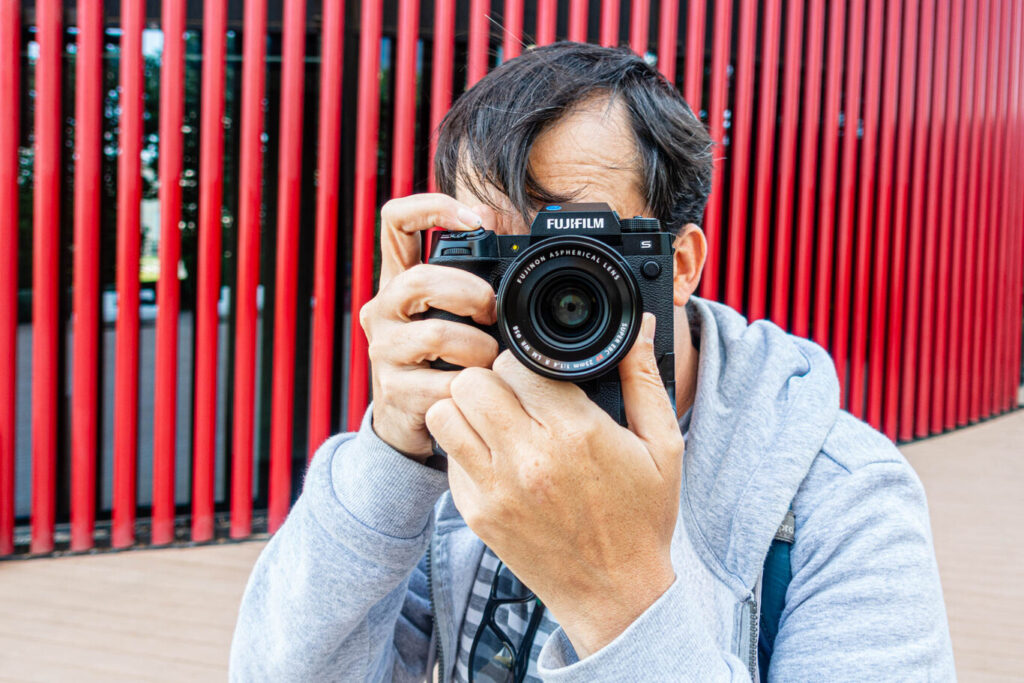
This camera is just above the FujiFilm X-T4, the most advanced model so far of the brand. It stands out for its performance and innovative accessories, such as the choice between two vertical handgrips (one gives greater capacity and the other also offers better wireless communication) or a fan that allows recording at high temperatures without affecting the system.
FujiFilm X-H2S, the pinnacle of APS-C sensor cameras
FujiFilm’s X-H range is the most modern and least developed within the brand. The X-T range stands out more, with version 4 getting all the attention. But this X-H2 improves the photographic properties and far exceeds the video performance. It seemed to be a dead series, but it has been resurrected with full honors.
First of all, the ergonomics of the sealed body stand out. The large grip is becoming more and more prominent in camera design. And it is returning to the design already proposed – and copied by all – by Luigi Colani on the Canon T90. FujiFilm itself indeed made 70s retro bodies fashionable, but with this model, the grip is once again fundamental.
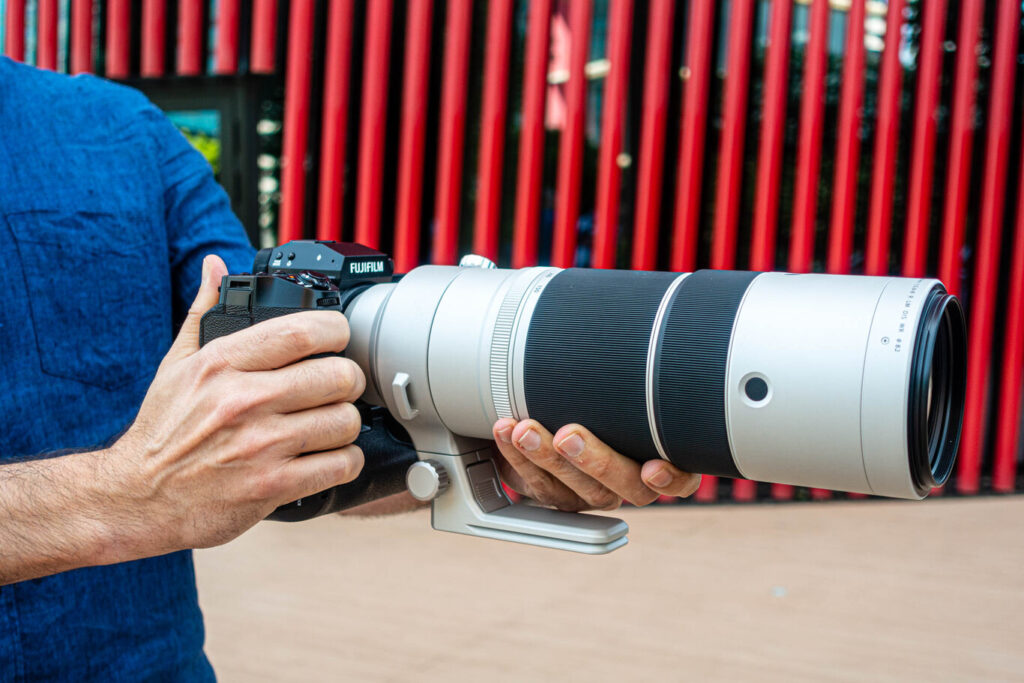
In addition, if we want to hold it more firmly, they have introduced two grips that increase the size and weight of the body to avoid the trepidation of smaller and lighter bodies. On top of that, more batteries can be connected to increase the number of shots per charge.
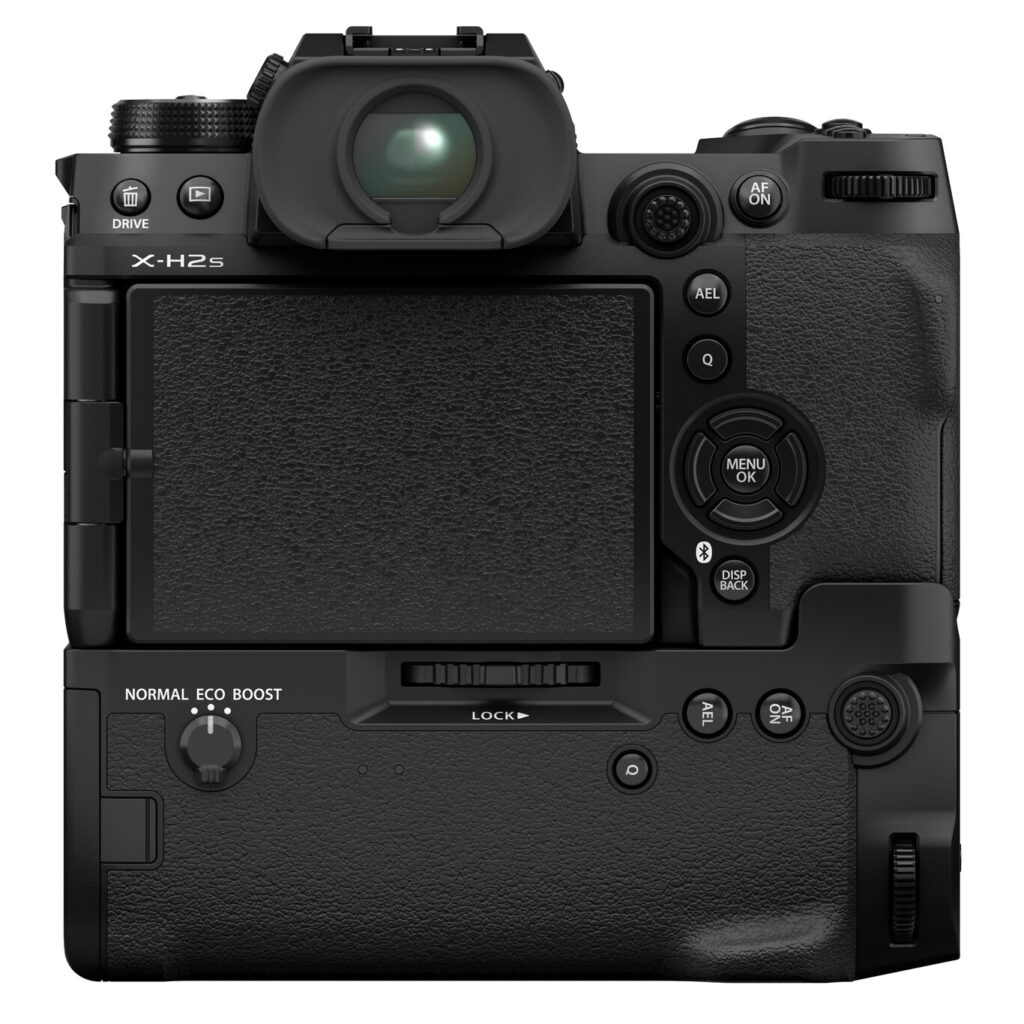
The extreme sensitivity of the shutter release is very striking. There is almost no intermediate position and the shutter immediately jumps. Something that can be a problem for many, especially if you have the motor on and shoot 40 fps without realizing it.
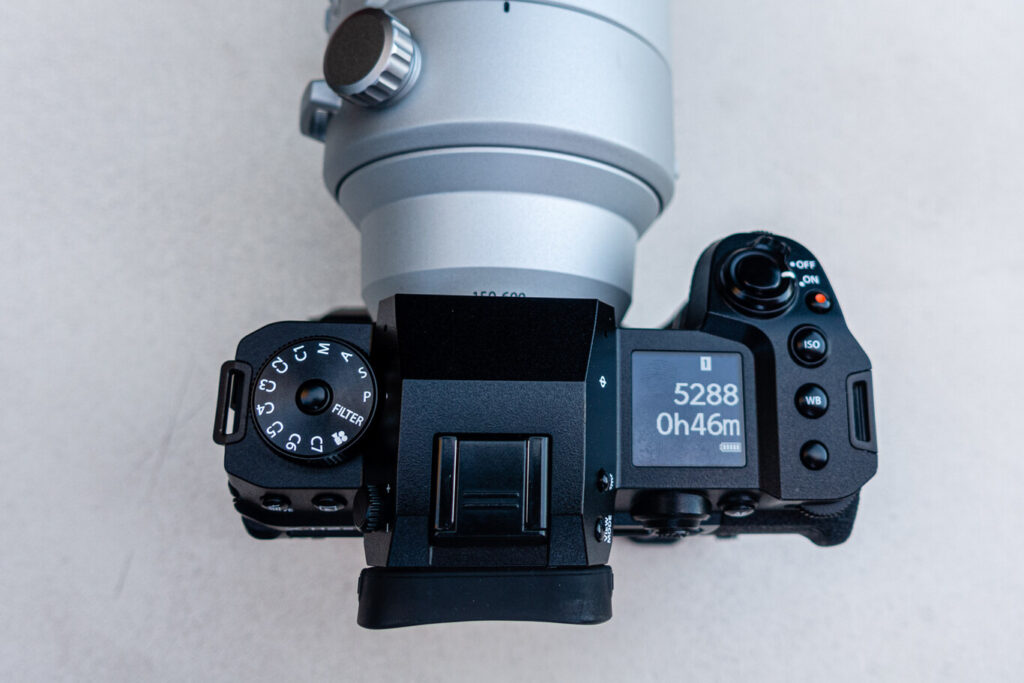
In the photographic section, the fifth-generation sensor and processor stand out. FujiFilm has probably the best sensor on the market, with a more intelligent pixel arrangement than the rest of the CMOS. The only problem it has is that the main developers, such as Photoshop and Capture One, have a hard time getting all the information out.
Let’s not forget to comment on the electronic viewfinder with 5.76 MP. Looking through it is like looking through the best optical viewfinders that equipped the legendary Canon EOS 1 or Nikon D6 SLRs. It is between the viewfinder of the Sony A7 SIII and the Sony A7 RIV. And finally, the LCD screen allows you to take even a simple selfie.
As usual, this model is faster than its predecessor and reaches the AF speed of competing models for uncomplicated work in nature or sport.
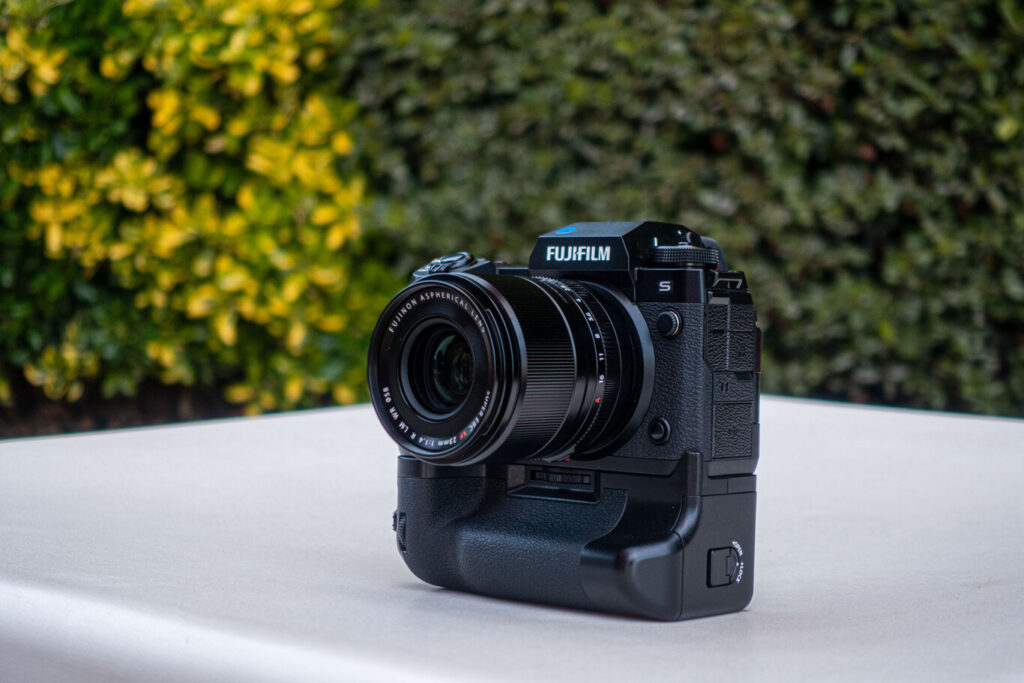
As a car commercial used to say, power without control is useless. So it is equipped with a very effective predictive AF system. The theory is that it makes many more calculations per second thanks to a new algorithm that makes it easier to track and recognize subjects in many more situations, even in low contrast. And it works equally well in the video, where it traditionally works with manual focus.
And it achieves that 40 fps speed with the electronic shutter, even with continuous focus (AF-C) and without the dreaded blackout. The last link, to avoid the bottleneck, is that it allows working with CFexpress Type B cards. They have a much higher transfer speed for a price that is still too high.
What’s new in the world of video
This is where this camera presents the most novelties. The most striking, and the one that brings it closer to the heavyweights, such as the Sony A7SIII, is that it can record internally in Apple ProRes, a codec that offers much higher quality in post-production.
But that’s not all the new features. It increases the frame rate, and the image frequency because it can process more data. You can record at 120 fps in 4K with small cropping of 1.29x and at 60 fps without any cropping of the sensor. And it goes up to 240p in Full HD.
If we need to increase the dynamic range, and it is something fundamental for video post-production, we have the F-Log2, a logarithmic curve that allows us to increase the details from shadows to highlights by up to two steps. The image will look flat but with as much information as possible in any contrast scene.
And we avoid the dreaded rolling shutter, those scenes in which moving lines become curves. And as has become the norm, there is no longer a 30-minute limit for recording.
The new lenses for FujiFilm
A professional camera without lenses makes no sense at all. Photographers need all kinds of focal lengths, from wide-angle to extreme telescopes, to capture what the customer wants. That’s why two lenses have been introduced: FUJINON XF150-600mm F5.6-8 R LM OIS WR and FUJINON XF18-120mm F4 LM PZ WR.
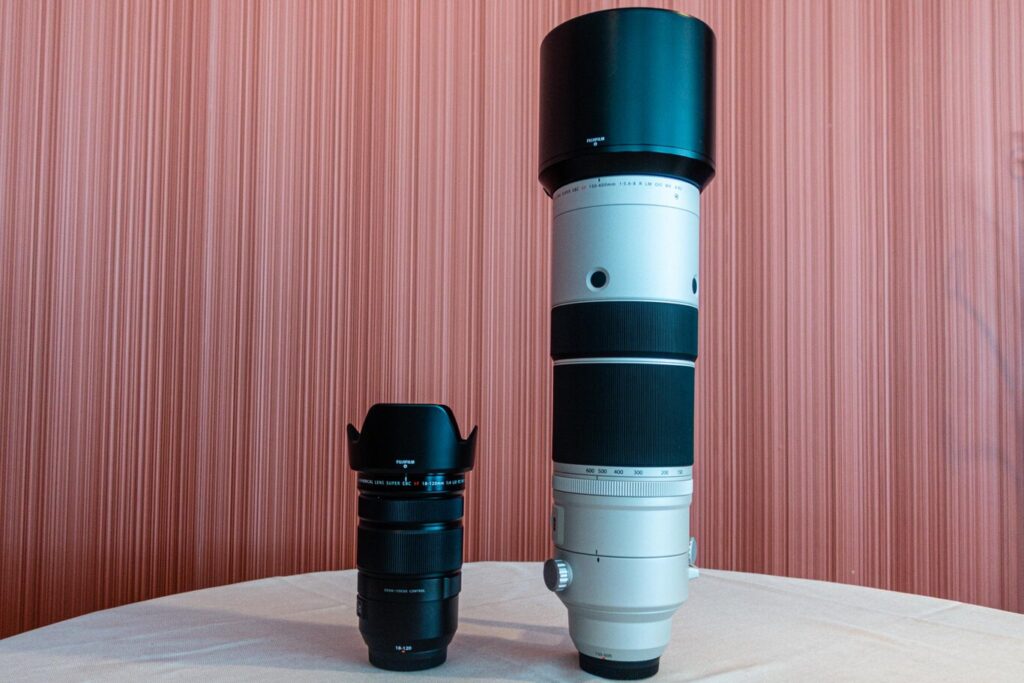
The former is a telephoto zoom lens (equivalent to 229mm-914mm in 35mm film format) with a moderate weight (1605g) and size, which takes advantage of the full potential of the new camera. On the hand, it is surprising how well distributed the masses are because it does not change in size. Indeed, it is not very bright, but with the current sensitivity performance, it is less and less important.
The other lens, the FUJINON XF18-120mm F4 LM PZ WR, has a motorized zoom. That makes it a perfect lens for video. And not at all comfortable for photography. But it allows you to shoot without fear of losing focus while creating videos.
Price and Availability of the FujiFilm X-H2S
The market is having a lot of problems because of all the socio-political and health problems. But at the presentation in Barcelona, we were assured that the FujiFilm X-H2S will be available for €2,749 in early July.
The FUJINON XF150-600mm F5.6-8 R LM OIS WR will be available at the end of July for €2199 and the FUJINON XF18-120mm F4 LM PZ WR will cost 999€ in early September.
This post may contain affiliate links, which means that I may receive a commission if you make a purchase using these links. As an Amazon Associate, I earn from qualifying purchases.

